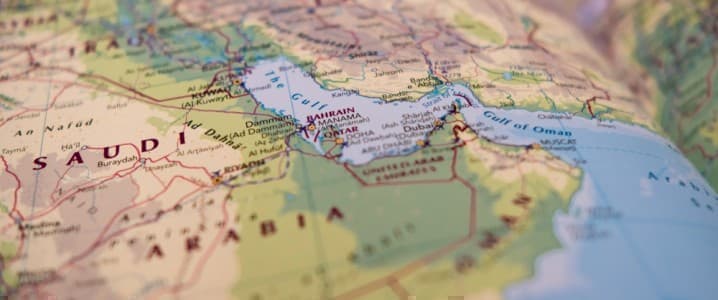Saudi Arabia bills it as the city of the future to diversity and grow its economy. Critics say Saudi Crown Prince Mohammed bin Salman’s futuristic city in the desert that will be a narrow line more than 100 miles long is a pipe dream. The futuristic NEOM project is a key pillar of Saudi Arabia’s Vision 2030 program to boost and diversify its economy, according to the Vision 2030 website. NEOM and its three so-called ‘regions,’ the Line, Oxagon, and Trojena, are to be built on 26,500 square kilometers (10,230 square miles) in northwestern Saudi Arabia and will introduce a new model of urban sustainability where residents “will embrace a culture of exploration, risk-taking and diversity.”
But the entire project, estimated to cost around $500 billion, is not without controversies, ranging from doubts that the highly ambitious architectural and planning design can even be achieved, to human rights abuses, which are not uncommon in the Kingdom.
This summer , the Crown Prince revealed the design for THE LINE, the futuristic city with no roads, cars, or emissions, which will run on 100% renewable energy, and 95% of the land will be preserved for nature.
“The designs revealed today for the city’s vertically layered communities will challenge the traditional flat, horizontal cities and create a model for nature preservation and enhanced human livability. THE LINE will tackle the challenges facing humanity in urban life today and will shine a light on alternative ways to live,” the Crown Prince said in July.
Last week, Saudi Arabian aerial photography company Ot Sky released drone footage showing heavy construction machinery starting work on The Line.
The Line promises to be a zero-carbon city through the elimination of carbon-intensive infrastructure like cars and roads. It will operate on 100% renewable energy, including the operations of its industries. The Line will be only 200 meters (656 ft) wide, but 170 kilometers (105 miles) long and 500 meters (1,640 ft) high. End-to-end travel via a high-speed rail will take 20 minutes. The Line is planned to eventually accommodate 9 million people. Oxagon, also in the NEOM development, will host industries and innovation, including a hydrogen plant, while Trojena will offer year-round outdoor skiing and adventure sports to be completed in 2026, Saudi Arabia says. This month, NEOM named its first hotel partner for developing the planned mountain tourism destination Trojena. NEOM aims to attract more than five million visitors by 2030, it adds.
According to Saudi Arabia’s plans, NEOM should be up and running by the end of the decade.
How the Kingdom will pay for it is not so detailed as the mission and vision of the NEOM regions and their never-done never-seen futuristic 100% clean-energy development.
Related: Biden’s Plan To Refill The SPR Is Unlikely To Boost U.S. Oil Output
Many of the funds will come from the massive oil revenues Saudi Arabia is currently generating. According to data from the General Authority for Statistics, in August alone, Saudi merchandise exports – 79.9% of which came from oil – stood at $35.5 billion (133.7 billion Saudi riyals). This means that the Saudis were making nearly $1 billion in oil revenues every day in that month.
In July, Mohammed bin Salman said that Saudi Arabia planned to create an $80-billion investment fund to help develop the NEOM megaproject.
The Kingdom is also looking to attract foreign executives by paying them more than $1 million a year each, above the average salary of $830,000 in 2021 for CEOs at the biggest U.S. companies, according to The Wall Street Journal. Many could be tempted—Saudi Arabia doesn’t have an income tax.
Yet, the money—as huge as $500 billion is—could be one of the smaller issues for the NEOM development. Some architects and urban planning experts doubt the megaproject will be able to overcome physical and environmental obstacles to building such a narrow but higher and much longer ‘city’, while others say that any environmental benefits would be overwhelmed by the huge carbon footprint of the construction phase.
Then there is the issue of human rights, always lurking somewhere when Saudi Arabia is involved. Just this month, the rights group ALQST said that the Kingdom had sentenced to death three men who refused to have their tribe evicted from its homeland to make way for NEOM.
By Tsvetana Paraskova for Oilprice.com
More Top Reads From Oilprice.com:
- Colombia Is On The Brink Of An Energy Crisis
- Biden Just Put A Floor Under Oil. Will It Work?
- Oil Holds Gains Despite Crude Inventory Build


















